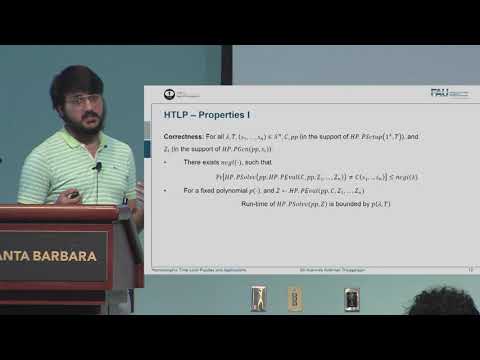CryptoDB
Homomorphic Time-Lock Puzzles and Applications
| Authors: | |
|---|---|
| Download: |
|
| Abstract: | Time-lock puzzles allow one to encrypt messages for the future, by efficiently generating a puzzle with a solution s that remains hidden until time $$\mathcal {T}$$ has elapsed. The solution is required to be concealed from the eyes of any algorithm running in (parallel) time less than $$\mathcal {T}$$. We put forth the concept of homomorphic time-lock puzzles, where one can evaluate functions over puzzles without solving them, i.e., one can manipulate a set of puzzles with solutions $$(s_1, \dots , s_n)$$ to obtain a puzzle that solves to $$f(s_1, \ldots , s_n)$$, for any function f. We propose candidate constructions under concrete cryptographic assumptions for different classes of functions. Then we show how homomorphic time-lock puzzles overcome the limitations of classical time-lock puzzles by proposing new protocols for applications of interest, such as e-voting, multi-party coin flipping, and fair contract signing. |
Video from CRYPTO 2019
BibTeX
@article{crypto-2019-29875,
title={Homomorphic Time-Lock Puzzles and Applications},
booktitle={Advances in Cryptology – CRYPTO 2019},
series={Lecture Notes in Computer Science},
publisher={Springer},
volume={11692},
pages={620-649},
doi={10.1007/978-3-030-26948-7_22},
author={Giulio Malavolta and Sri Aravinda Krishnan Thyagarajan},
year=2019
}

